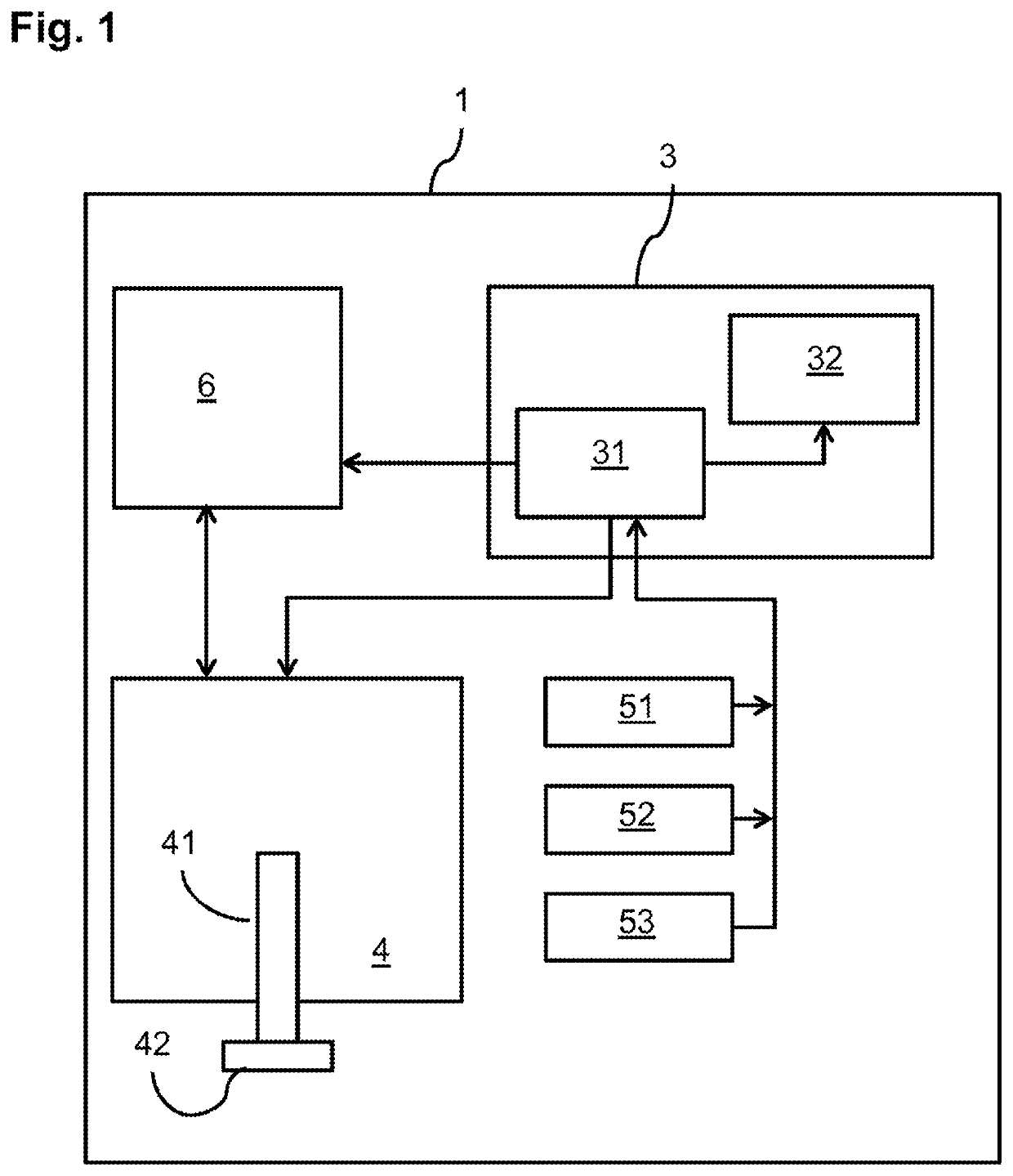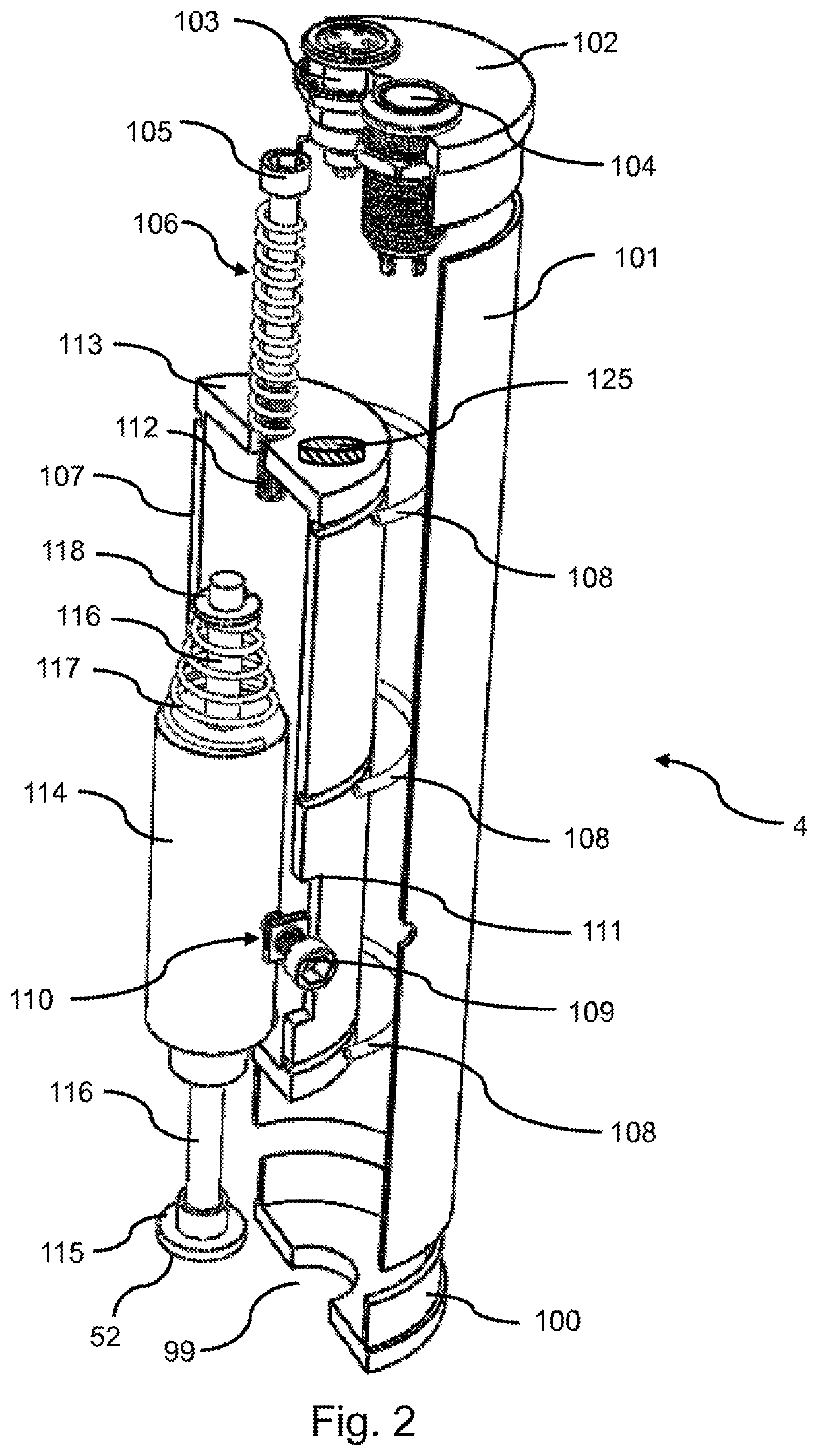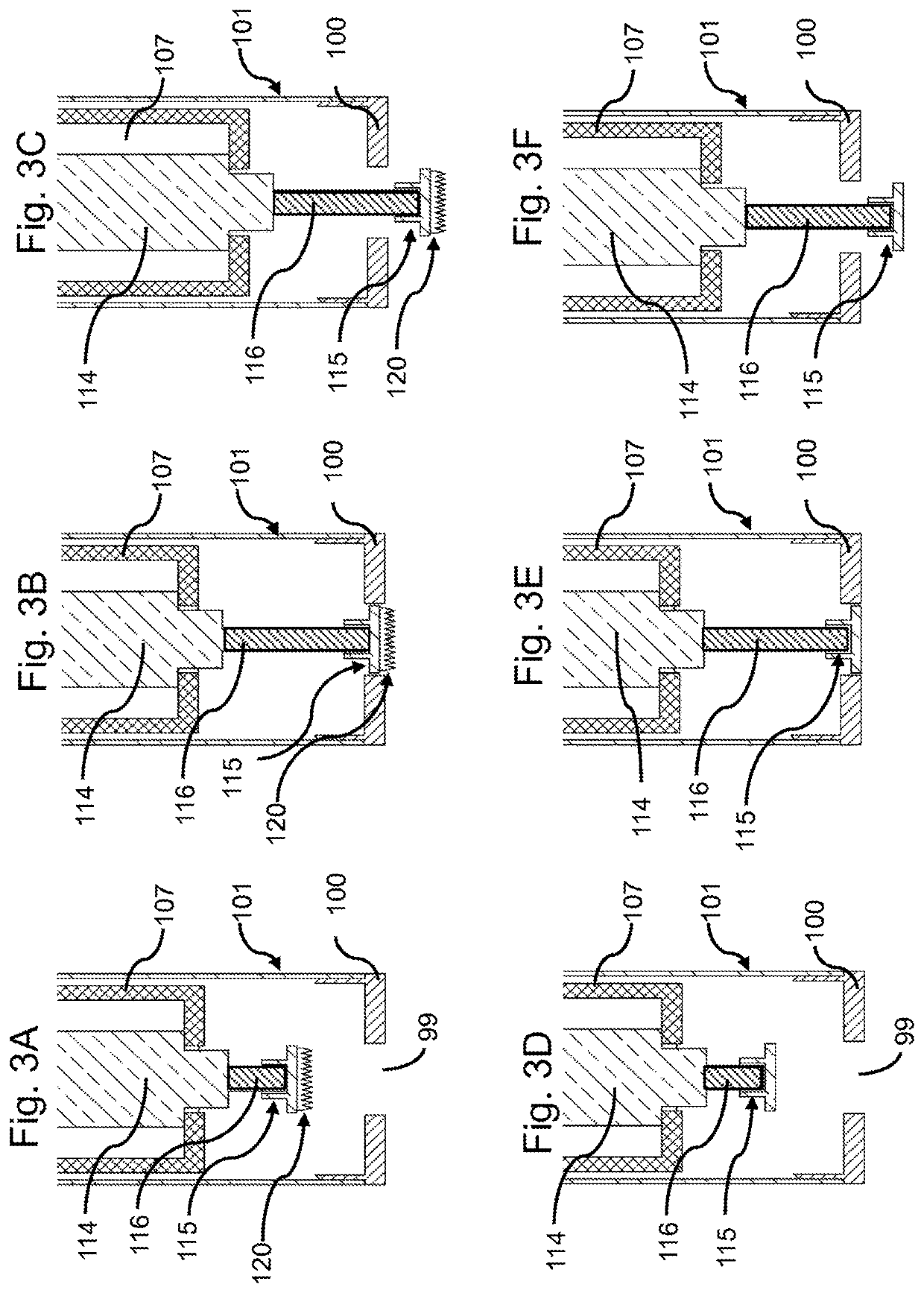System and method for applying microneedles
a microneedle and applicator technology, applied in the field of microneedle applicator system, can solve the problems of decreased skin penetration efficiency of these microneedles, decreased microneedle sharpness and/or surface roughness, and increased skin roughness, so as to reduce the need for immunizing time, the effect of very controlled impact of applying microneedles
- Summary
- Abstract
- Description
- Claims
- Application Information
AI Technical Summary
Benefits of technology
Problems solved by technology
Method used
Image
Examples
example 1
[0124]A controller according to FIG. 1 and an applicator according to FIG. 2 were used in a mode to deliver a certain amount of force via a supporting plateau (as shown in FIG. 4). Three different push-type solenoids were used in three different applicators. The pressure of the three actuators as a function of the actuator power was investigated by adjusting the actuator power and measuring the maximum holding force of the solenoid, with the actuator in a protruded position.
[0125]As shown in FIG. 7, the pressure of the actuators was controlled by digitally adjusting the actuator power on the controller. By using solenoid X1 the pressure was controlled between 0.95 Newton (1%) and 13.8 Newton (100%) by digitally adjusting the actuator power on the controller. By using solenoid X2 the pressure was controlled between 0.20 Newton (1%) and 8.7 Newton (100%) by digitally adjusting the actuator power on the controller. By using solenoid X3 the pressure was controlled between 1.9 Newton (1%...
example 2
[0126]A controller according to FIG. 1 and an applicator according to FIG. 2 were used in a mode to deliver a certain momentum via a supporting plateau (as shown in FIG. 5). Three different push-type solenoids were used in three different applicators. The activation time to move the supporting plateau from a retracted position into a zero-position of the three actuators as a function of the actuator power was measured by the controller, as shown in FIG. 8. The actuator distance between the retracted position and the zero-position was measured by using a digital ruler (Solenoid X1: 13.3 mm; Solenoid X2: 8.55 mm; Solenoid X3: 13.5 mm). Subsequently, the average velocity was calculated by dividing the actuator distance by the activation time.
[0127]As shown in FIG. 8, the momentum of the supporting plateau via the actuators was controlled by digitally adjusting the actuator power on the controller. By using solenoid X1 the average velocity was controlled between 8.3 cm / second (37%) and ...
PUM
 Login to View More
Login to View More Abstract
Description
Claims
Application Information
 Login to View More
Login to View More - R&D
- Intellectual Property
- Life Sciences
- Materials
- Tech Scout
- Unparalleled Data Quality
- Higher Quality Content
- 60% Fewer Hallucinations
Browse by: Latest US Patents, China's latest patents, Technical Efficacy Thesaurus, Application Domain, Technology Topic, Popular Technical Reports.
© 2025 PatSnap. All rights reserved.Legal|Privacy policy|Modern Slavery Act Transparency Statement|Sitemap|About US| Contact US: help@patsnap.com



